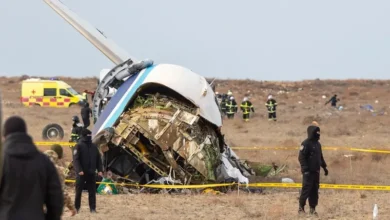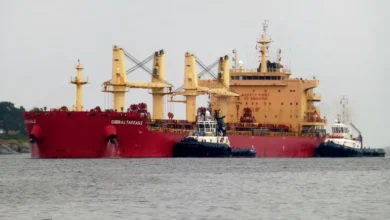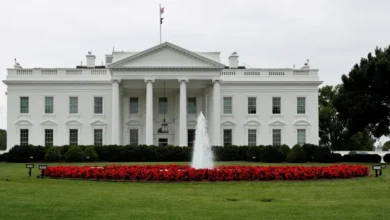Alaska’s bursting ice dam highlights threat of glacial floods worldwide

The grey, two-storey home with white trim toppled and slid, crashing into the river below as rushing waters carried off a bobbing chunk of its roof. Next door, a condo building teetered on the edge of the bank, its foundation already having fallen away as erosion undercut it.
The destruction came at the weekend as a glacial dam burst in Alaska’s capital, swelling the levels of the Mendenhall River to an unprecedented degree.The bursting of such snow-and-ice dams is a phenomenon called a jokuhlaup, and while it’s relatively little known in the United States, researchers say such glacial floods could threaten about 15 million people around the world.
“We sat down there and were just watching it, and all of a sudden trees started to fall in,” Amanda Arra, whose house continued hanging precariously over the river bank on Monday, told the Juneau Empire. “And that’s when I started to get concerned. Tree after tree after tree.”
The flooding in Juneau came from a side basin of the awe-inspiring Mendenhall Glacier, which acts as a dam for the rain and melted snow that collect in the basin during the spring and summer. Eventually, the water gushed out from under the glacier and into Mendenhall Lake, from where it flowed down the Mendenhall River.
Water released from the basin has caused sporadic flooding since 2011. But typically, the water releases more slowly, over a number of days, said Eran Hood, a University of Alaska Southeast professor of environmental science.“The flows were just way beyond what anything in the river could withstand,” Hood said.
Two homes were completely lost and a third partially so, Robert Barr, Juneau’s deputy city manager, said on Monday. There were no reports of injuries or fatalities.
Eight buildings, including those that fell into the water, have been condemned, but some might be able to be salvaged by substantial repairs or bank stabilisation, he said. Others suffered lesser damage.
While climate change is melting the Mendenhall and other glaciers around the world, its relationship to such floods is complicated, scientists have said.The basin where the rain and meltwater collect was formerly covered by the Suicide Glacier, which used to flow into the Mendenhall Glacier, contributing ice to it. But the Suicide Glacier has retreated as the climate warms, leaving a lake in the basin dammed by the Mendenhall.
While that part can be linked to climate change, the unpredictable ways that those waters can burst through the ice dams and create floods downstream is not, they said.
“Climate change caused the phenomenon, but not the individual floods,” Hood said.










